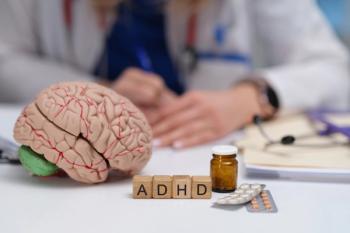
- Consultant for Pediatricians Vol 8 No 8
- Volume 8
- Issue 8
When Johnny Can’t Sleep
“My 8–year–old son has always had trouble falling asleep. He never falls asleep before 11 PM, even on school nights. Is there anything you can prescribe so he can get to sleep earlier?”
A MOTHER ASKS:
“My 8–year–old son has always had trouble falling asleep. He never falls asleep before 11 PM, even on school nights. Is there anything you can prescribe so he can get to sleep earlier?”
THE PARENT COACH ADVISES:
Approximately 10% of parents think their child has a sleeping problem,1 and studies reveal that about 25% of all children experience some type of sleep disturbance.2 Sleepiness in children can be difficult to assess; its manifestations can range from overt tiredness and falling asleep in school to hyperactivity and inability to concentrate. However, there is hard evidence that children are not getting the sleep they need. The National Sleep Foundation’s 2004 Sleep in America Poll determined that the amount of sleep children are getting is insufficient. Its results show that toddlers get an average of 11.7 hours of sleep nightly while experts recommend 12 to 14 hours; preschoolers get 10.4 hours of sleep as opposed to the recommended 11 to 13 hours; and school-aged children get 9.5 hours instead of the recommended 10 to 11 hours.
Medications not appropriate for most pediatric sleep problems. Sleep medications are seldom the answer. There have been few studies in pediatric patients of the efficacy and safety of either prescription or over-the-counter sleep medications, and these agents have not been approved by the FDA for use in children. In 2005, a multidisciplinary task force of the American Academy of Sleep Medicine reviewed the medical literature concerning the use of over-the-counter agents (Box) and prescription medications for pediatric insomnia in the primary care setting. The task force concluded that sleep medications may be useful in children with neurodevelopmental disorders, pervasive developmental disorders, chronic medical conditions, and psychiatric disorders; however, it recommended that these medicines always be used in conjunction with empirically based behavioral treatment strategies and adequate sleep hygiene.3 Aggressive management of any coexisting medical conditions (eg, gastroesophageal reflux disorder, asthma) is also needed to improve sleep.
Most children seen by pediatricians for sleep concerns will probably not be in one of the targeted groups mentioned above. The administration of drugs to help with sleep is generally not recommended in an otherwise healthy child.
Causes of sleep problems in healthy children. There are numerous possible causes of a child’s inadequate sleep. The problem may be a simple behavioral issue, such as insufficient sleep time, bedtime resistance, sleep-onset association disorder, or resistance to limit-setting.4 Sometimes sleep can be disrupted by the exacerbation of certain medical conditions, such as asthma, pain, pruritus, seizures, developmental delay, or attention-deficit/hyperactivity disorder.4 Studies have demonstrated a relationship between sleep disorders and behavioral issues, including oppositional and aggressive behavior, poor attention, anxiety, and problems in school.5 Or, the problem might be the manifestation of a sleep disorder: these include circadian rhythm disorder, obstructive sleep apnea, parasomnias (night terrors, sleepwalking, sleep talking, nightmares, rhythmic movement disorders), narcolepsy, and restless legs syndrome/periodic limb movement syndrome.4
Identification of the problem suggests solutions. The history and physical examination usually point to the cause of a particular child’s sleep problem. In most children, insomnia and frequent nighttime arousals are behavioral in origin. Problems with sleep-onset associations develop when a child connects an action (eg, rocking, holding, feeding) with falling asleep-and that action is no longer consistently part of his or her bedtime routine or awakenings occur in the middle of the night. Such problems are best solved by having the parent put the child to bed awake. This provides an opportunity for the child to develop the ability to self-soothe and put himself to sleep.
Another sleep problem that is behavioral in origin is that of the child who has “issues” with limit-setting: he resists going to sleep at a designated time by asking for a hug, tissue, or drink, or by claiming to be afraid. Problems with limit-setting are solved when parents are firm with the bedtime and consistent in their responses.
Principles of good sleep hygiene. Good sleep hygiene should be prescribed whenever a child has a sleep disorder or other sleep problem. The National Sleep Foundation has made the following 4 recommendations for healthy sleep in children:
1. Make sufficient sleep a family priority.1 (Parents need to be educated about the importance of sleep and the recommended hours of sleep for those in their child’s age-group.)
2. Embrace good sleep habits.1 These tips for parents may improve their children’s sleep time and quality:
- Follow a consistent bedtime routine that provides positive time with the parents (eg, reading stories) and that allows enough time to prepare for bed so that everyone is relaxed.
- Discontinue use of electronic devices (ie, television, video games, computer, e-mail, phone, text-messaging) 1 hour before bedtime because of the energizing effect these have. (Parents need to be encouraged to remove the television set from their child’s bedroom. About 30% of preschoolers and 43% of school-aged children have a television set in their bedroom.1 Shorter sleep time is associated with television watching.)
- Make sure children avoid foods and drinks that contain caffeine. (About 75% of school-aged children consume caffeine.1 Children who consume caffeine sleep less than those who do not.1)
- Put children to bed awake: do not let them fall asleep while being rocked, held, or fed.
- Do not sleep with your child or allow your child to sleep in your bed.
- Reward good nighttime behavior.
3. Learn to recognize sleep problems.1 The most common sleep problems are insufficient sleep, bedtime resistance, frequent awakenings, and snoring or difficulty in breathing while sleeping.
4. Talk to your doctor about sleep.1
When additional help is indicated. The American Academy of Pediatrics recommends screening all children for snoring to evaluate for sleep disordered breathing.6 However, primary snoring and obstructive sleep apnea are indistinguishable on the basis of history and physical findings; thus, the gold standard for the diagnosis of obstructive sleep apnea is all-night polysomnography performed in a sleep laboratory with the parent present. Referral to a sleep specialist may also be required if sleep hygiene and behavioral treatment strategies do not work or if you have any concern that a child may have a confounding sleep disorder. All patients with complex or high-risk conditions should be referred to a sleep specialist.
What About Melatonin?
Melatonin is an example of a dietary supplement that is used for sleep disturbances and that can be purchased over-the-counter. Endogenous melatonin is secreted by the pineal gland, and the timing of its release is associated with sleep onset.7 Melatonin has been extensively studied as a treatment for circadian rhythm disorders in adults and has been found efficacious in this setting.8 A few studies in children suggest that melatonin may reduce sleep-onset latency in children with sleep problems.8 Another study in 32 children demonstrated that melatonin may be effective and safe in the treatment of chronic insomnia in children.9 If parents choose to try melatonin for their child, they must be reminded that because it is considered a dietary supplement, it is marketed and sold without FDA regulation.
References:
REFERENCES:1. National Sleep Foundation. 2004 Sleep in America Poll. http://www.sleepfoundation.org/article/sleep-america-polls/2004-children-and-sleep.Accessed February 9, 2009.
2. Owens J. Classification and epidemiology of childhood sleep disorders. Prim Care. 2008;35:533-546, vii.
3. Owens JA, Babcock D, Blumer J, et al. The use of pharmacotherapy in the treatment of pediatric insomnia in primary care: rational approaches. A consensus meeting summary. J Clin Sleep Med. 2005;1:49-59.
4. Heussler H. 9. Common causes of sleep disruption and daytime sleepiness: childhood sleep disorders II. Med J Aust. 2005;182:484-489.
5. Gozal D, Kheirandish-Gozal L. Neurocognitive and behavioral morbidity in children with sleep disorders. Curr Opin Pulm Med. 2007;13:505-509.
6. Section on Pediatric Pulmonology, Subcommittee on Obstructive Sleep Apnea Syndrome. American Academy of Pediatrics. Clinical practice guideline: diagnosis and management of childhood obstructive sleep apnea syndrome. Pediatrics. 2002;109:704-712.
7. Sheldon SH, Ferber R, Kryger MH. Principles and Practice of Pediatric Sleep Medicine. Philadelphia: Elsevier; 2005;8:91-92.
8. Buscemi N, Witmans M. What is the role of melatonin in the management of sleep disorders in children? Paediatr Child Health. 2006;11:517-519.
9. Ivanenko A, Crabtree VM, Tauman R, Gozal D. Melatonin in children and adolescents with insomnia: a retrospective study. Clin Pediatr (Phila). 2003;42:51-58.
Articles in this issue
over 16 years ago
Lesions That Point to Serious Bacterial Infectionsover 16 years ago
Isolated Macrodactylyover 16 years ago
Erythema Toxicumover 16 years ago
Fish Tapeworm Infestationover 16 years ago
Persistent Ankle Mass in an Otherwise Healthy 9-Year-Old GirlNewsletter
Access practical, evidence-based guidance to support better care for our youngest patients. Join our email list for the latest clinical updates.








